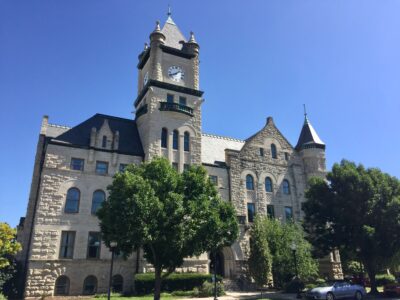Douglas County Commission gives OK to spray Lone Star Lake with herbicides
To stop an invasive plant from taking over Lone Star Lake, the Douglas County Commission has agreed to spray the water with herbicides.
Eurasian watermilfoil, an exotic plant that can spread quickly, is growing in the southwest Douglas County water body.
If left unabated, the plant can damage the health of the lake, according to Richard Sanders, a fisheries biologist with the Kansas Department of Wildlife, Parks and Tourism.
Currently the plant covers about 10 percent of the east arm of the lake, which is near the swimming beach, and is sporadic in other sections. The county would use the herbicides 24-D Granular or Aquathol-K to kill the plants.
“Normally, fisheries love to see aquatic vegetation. But this is an exotic form of vegetation. It grows so aggressively that it invades areas down to 20 feet deep,” Sanders told the commission.
The plant can create a huge canopy on the surface, making it difficult for those boating, fishing or swimming to navigate. It could also decrease the number of native plants and lower the amount of oxygen in the water, which would kill fish.
“Either eradicate now or live with it,” Sanders said.
The decision isn’t without controversy. In 2009, after several years of spraying to prevent curly-leaf pond weed from growing at the lake, the county stopped applying herbicides.
While those with cabins around the lake wanted to spray, environmentalists and fishermen opposed spraying the herbicide because they said the weeds provided a nursery for fish during the spawning season. Sanders was among those who spoke against spraying.
The county no longer sprays for curly-leaf pond weed, mainly because the plant dies off before the growing season. The same is not true for Eurasian watermilfoil.
This time around, Sanders believes the plant should be killed with chemicals before it continues to spread.





